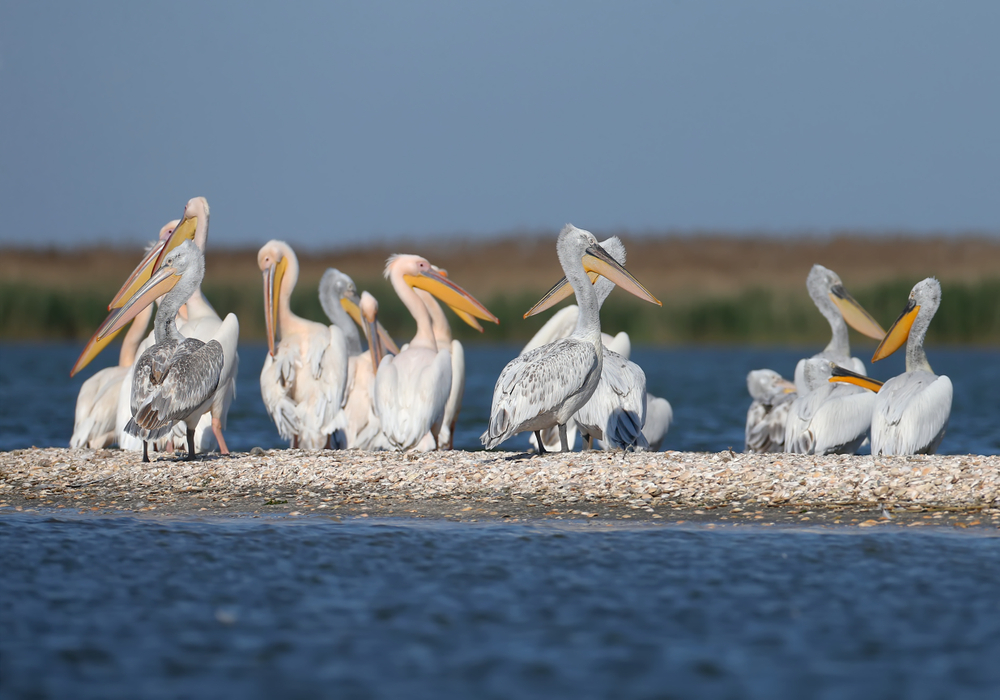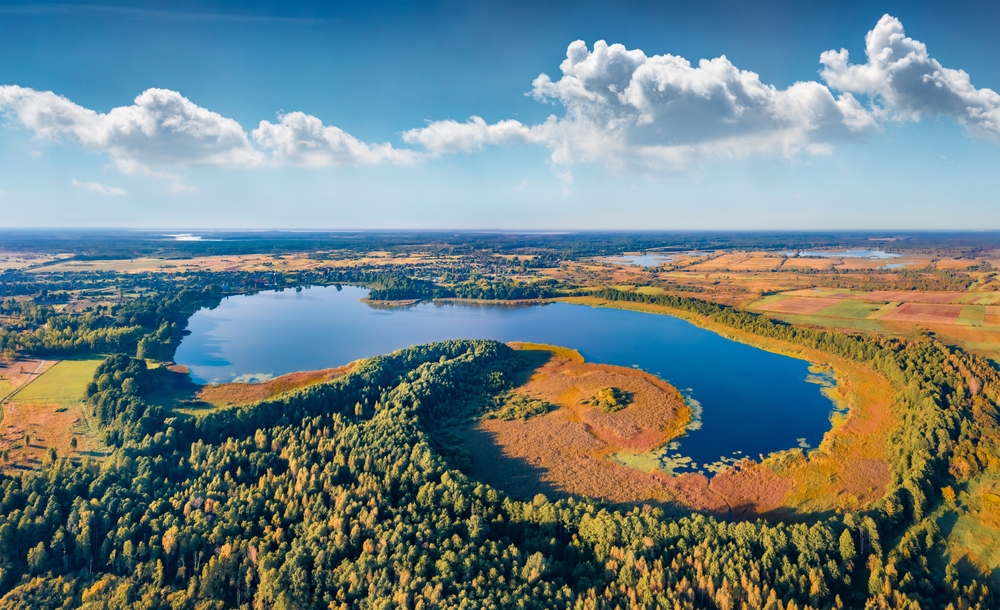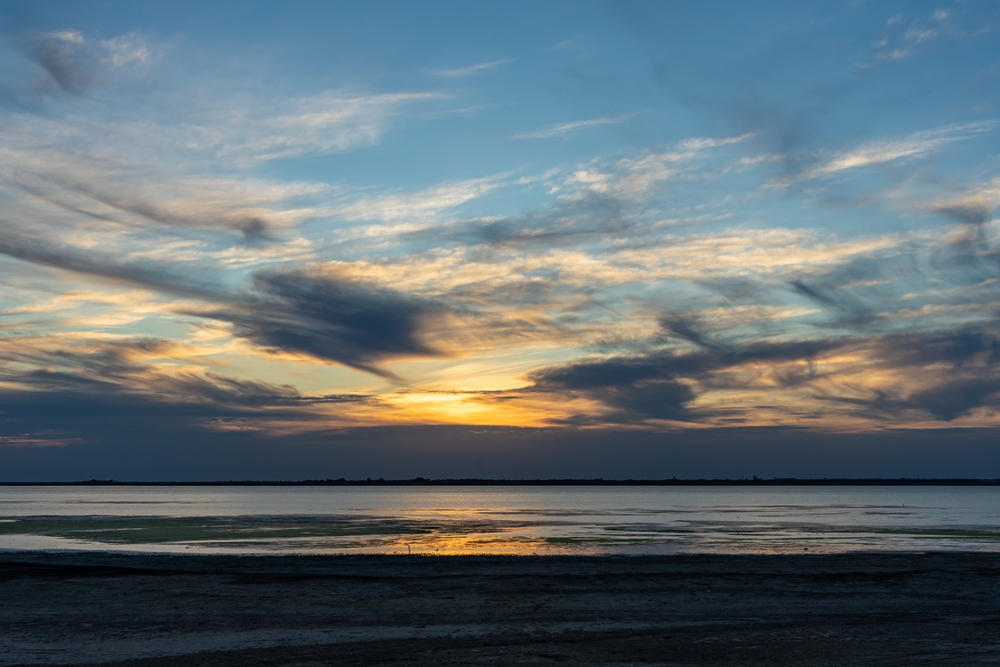Meotyda Overview
Meotyda National Nature Park, known locally as Національний природний парк “Меотида,” is a protected natural reserve located in southeastern Ukraine, along the northern coast of the Sea of Azov.
Established in 2009, the park covers an expansive area of approximately 80 square miles (207.2 square kilometers), providing refuge to a wide range of species and diverse ecosystems.
The region is recognized for its unique combination of steppe, coastal plains, floodplains, estuaries, sandy-shell islands, spits, and saline lakes, creating a distinctive and vital environment for both flora and fauna. The Bilosarayska and Kryva spits are among the park’s most significant geographical features, serving as critical nesting and migration areas for numerous bird species.
The terrain of Meotyda is a stunning mosaic of natural landscapes. The park contains rolling steppe grasslands, wetlands rich in biodiversity, and expansive sand dunes that stretch toward the sea. Its floodplain swamps and estuaries host a mix of salt and freshwater influences, fostering an abundance of aquatic life.
The spits and peninsulas create a dynamic coastal ecosystem, where shifting sands provide crucial nesting grounds for seabirds. Saline lakes scattered across the area further enrich the ecological variety, supporting plant species adapted to high salinity. The unique combination of landforms makes the park an important habitat for wildlife, particularly avian populations, and contributes to its reputation as a haven for nature conservation.
Meotyda is particularly renowned for its rich birdlife, with over 250 species recorded in the park. Among the most significant is the Dalmatian pelican, a rare and globally significant species that nests exclusively in this region within Europe. Other key bird species include the Sandwich tern, little tern, common tern, European herring gull, Pallas’s gull, and the pied avocet, which is emblematic of the park itself.
The park’s wetlands, spits, and islands provide vital breeding and stopover sites for migratory birds traveling across Eurasia. Apart from birds, the park also supports various mammals, reptiles, and insects, with over 114 species classified in Ukraine’s Red Book of endangered species. The flora within the park is equally diverse, with more than 640 identified plant species, including rare and endemic varieties such as sea-lavender, sea kale, and the small pasque flower.
Visitors to Meotyda National Nature Park can experience its beauty through a variety of activities. Birdwatching is one of the most popular pursuits due to the park’s exceptional avian diversity. Nature enthusiasts can explore eco-trails that wind through the steppe and coastal zones, providing opportunities to observe wildlife in their natural habitat.
Other recreational activities include trekking, biking, kitesurfing, windsurfing, swimming, and camping along the scenic coastline. The park also offers guided photo safaris, allowing visitors to capture the stunning landscapes and wildlife through photography.
Despite its ecological importance, Meotyda faces ongoing conservation challenges. Since 2014, the park has been affected by regional conflicts, leading to habitat degradation and limited administrative control in some areas. The presence of military activity in certain sections has threatened wildlife and disrupted conservation efforts.
However, in western sections of the park, increased security has had an unintended benefit by reducing human disturbance in nesting areas, allowing some bird populations to thrive.
Conservation authorities continue to work toward preserving the park’s delicate ecosystems through monitoring programs and habitat restoration efforts, ensuring the long-term survival of its unique biodiversity.













































































